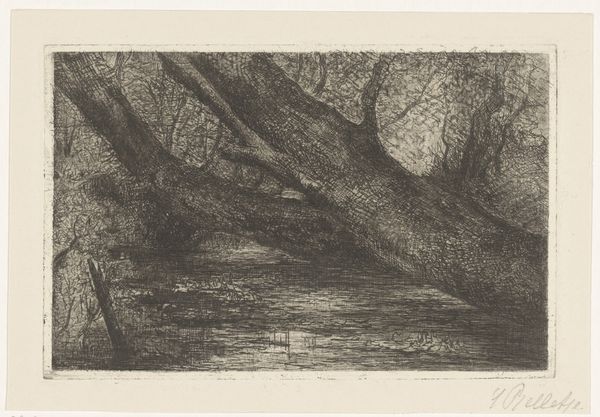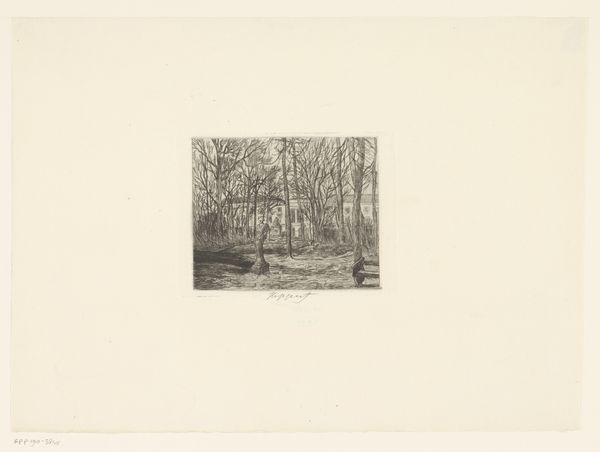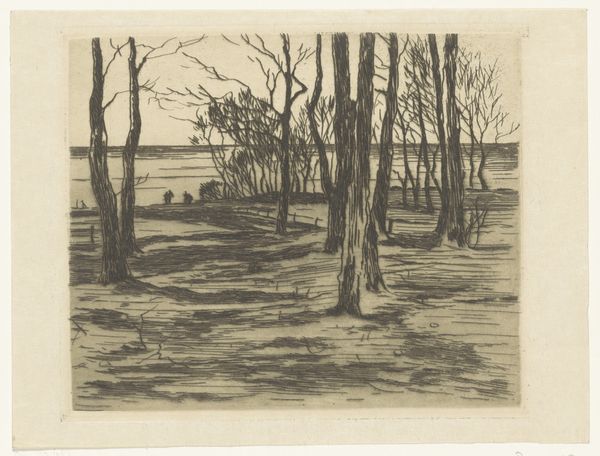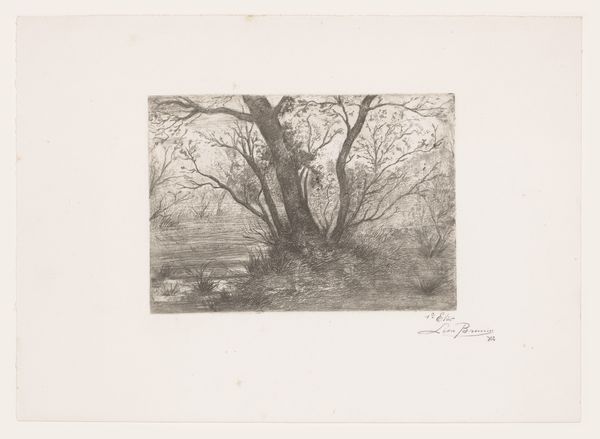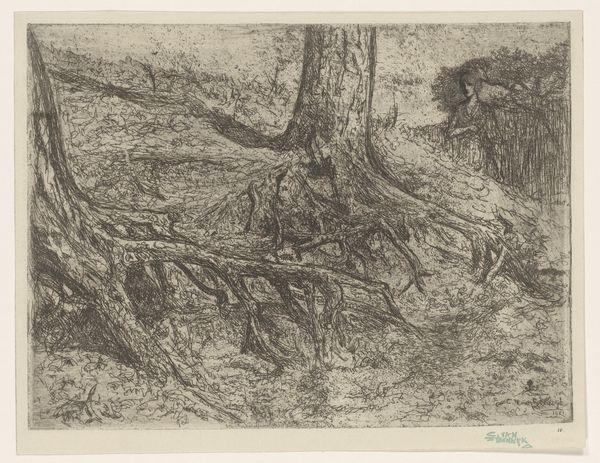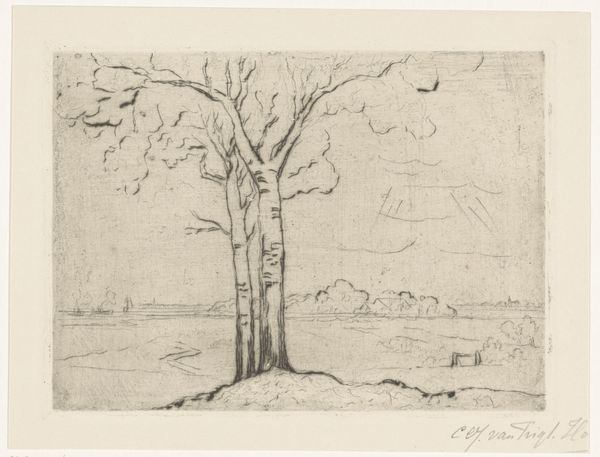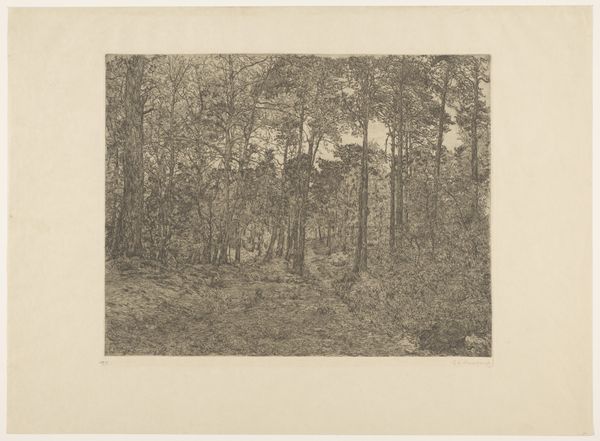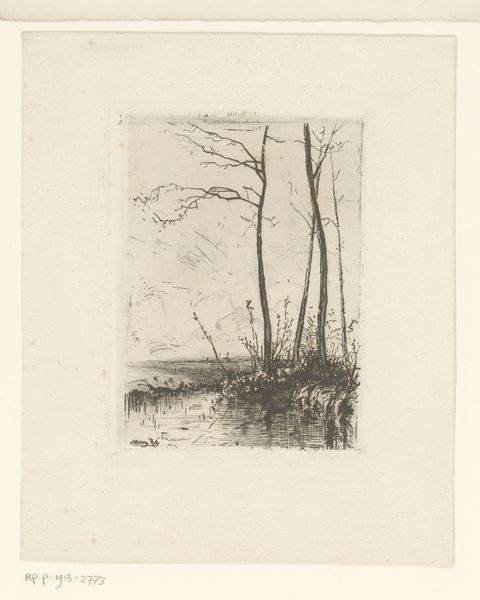
drawing, print, etching
#
drawing
# print
#
etching
#
landscape
#
etching
Dimensions: height 106 mm, width 306 mm
Copyright: Rijks Museum: Open Domain
Editor: This etching by Wijnand Otto Jan Nieuwenkamp, made sometime after 1898, depicts "Waringinbomen in een tuin in Buitenzorg" – banyan trees in a garden. The sheer density of the trees and their roots creates an almost claustrophobic, yet fascinating, scene. What sort of stories do you see within this grove? Curator: The banyan, or waringin tree, is a powerful symbol in many cultures. Notice how Nieuwenkamp meticulously renders not just the trunk and leaves, but those signature aerial roots that descend like curtains. Those roots signify a kind of immortality – the tree constantly renewing itself, a symbol of persistence and endurance. Don’t you think that’s significant in understanding cultural memory, a connection between the past and the future? Editor: I do see that connection to the future, especially in the way that the roots seem to stretch down, searching. But the details in the foreground also suggest a more immediate connection to daily life. Is there anything more to see there? Curator: Indeed. The image evokes a powerful sense of place, specifically Indonesia. The tree becomes a signifier of Indonesian identity, resilience, and the complex relationship between nature and culture. And consider the emotional impact - the way the etching captures the almost mystical atmosphere of the tropics, layered with the historical weight of colonialism. Editor: That colonial aspect gives me a completely different lens! These are the trees not only of the local environment but also of a Dutch colonial garden. Curator: Exactly. And the etching, a portable medium, allows for the dissemination of that colonial vision. So, in looking closely, we can see these banyan trees serving not only as botanical specimens, but loaded symbols of power, place, and identity. What will you think of next time you see a Banyan? Editor: I'll definitely remember their complex role as a natural element intertwined with cultural and historical forces. It is much more layered than I thought!
Comments
No comments
Be the first to comment and join the conversation on the ultimate creative platform.
